As the climbing season is starting to ramp up again for the summer I hear more and more people asking me "What harness should I get?". While there are many harnesses on the market today the choice is actually reasonably easy. But what are the important bits to look out for and when is it best to choose by your favourite colour? Fear not, this handy little guide will explain the few considerations you need to make and will allow you to make a reasonable choice in the stores.
Style
Broadly speaking there are 5 harness styles out there:
Group harnesses
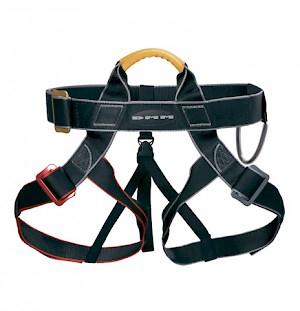
Watch any kids party at a local climbing wall and chances are you will see one of these beasts. Uncomfortable to wear and fall on, but safe, cheap and hard wearing, these are designed for use by people who don't know better. Many of these harnesses are characterised by a single tie in point - a sure fire way to identify them quickly - and minimalist padding and clutter on the belt. Classic, frequently spotted examples include the DMM Brenin, DMM Alpine and the Petzl Gym.
Traditional (articulated) harnesses
The classic standard harness. Articulated means the leg loops are independent from the main waist loop and usually attached only by the belay loop and a retaining elastic at the back. These harnesses are the workhorses of the sport with plenty of space to rack even the largest gear collection while providing the padding and comfort required to carry it. Most will include at least 4 gear loops, ice tool attachments, a haul loop at the back to carry up a second rope and adjustable leg loops.
These harnesses are a perfect compromise if you are unsure where the next 5-7 years of climbing are likely to take you. Light enough to feel at home on the indoor wall but comfortable enough for those days hanging on a sport route while also sturdy enough for the cruelties of trad. Examples can be found around every corner of the harness market, though my personal favourites include the Petzl Corax, Petzl Aquila, DMM Renegade 2 (Puma for the ladies) and the DMM Viper 2 (Vixen for the ladies).
Indoor and sport harness
A slightly more lightweight option of the traditional harness. Usually featuring less padding and possibly missing leg buckles, while some might even shed a few gear loops in the pursuit of minimalism. If all you are ever going to do is climb indoors or carry quickdraws on sport climbs by all means go for them. Some of these do come with a few extras such as ice tool attachments and haul loops as well, but more for the versatility than the actual intended use. Also, be aware that lightweight materials can be more susceptible to wear and other damage. Currently the closest contender in this category I am aware of is the Petzl Sama. As said - they are hard to find these days.
Mountaineering harness
Ultra-minimalist but more though through than the group harnesses anything in this category is for scramblers and alpinists only. While many use standard trad harnesses or their slightly more lightweight cousins in this terrain, there are some occasions where a specialised mountaineering harness is quite useful. These harnesses are characterised by almost no padding on the harness itself due to mainly being used with layers of clothing underneath. Equipped with ample leg loops and usually featuring attachments for ice climbing gear some of these harnesses allow the wearer to put them on without having to lift their legs. This is especially useful when wearing crampons or stood in exposed places. In any case this harnesses should only be bought by those who know why they are buying it. Examples include the DMM Super Couloir and the Black Diamond Alpine Bod.
Specialised harness
There are many more harnesses specifically designed for specific jobs. Petzl's Fractio and Superavanti for example are harnesses specifically designed for caving (and nothing else), while the Petzl Canyon explains its intended use through the name. Full body harnesses can be useful for small children and disability climbing, but need to be treated with caution as they need to be fitted properly and allow little margin for error. Children's harnesses are a good solution for our little climbers, but be prepared to bu frequently as they grow given the adjustment ranges are usually quite narrow.
Buckles
Named in a variety of ways there are only three significantly different buckle systems around.
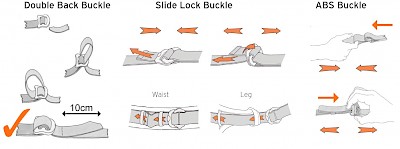
The manual double back buckle is characterised by the webbing having to be threaded back onto itself in order to generate a secure locking assembly. In general at least 10cm of loose webbing is recommended by the manufacturers once the system has been locked off to minimise the risk of unplanned opening.
The slide lock buckle is slightly less faff to adjust as all you need to do is pull on the strap and store the loose webbing to the back. However, it is important you do this as the loose strap could otherwise get caught when falling or descending and inadvertently open up the buckle. A strap that is not secured to the back on these buckle systems is almost as dangerous as a double back buckle not double backed - try saying that fast 10 times.
The automatic buckle system is a more recent invention aiming to make the slide lock buckle even safer. In principle it works the same way, but the strap is fixed to the harness eliminating the need to secure it to the back. This buckle assembly is also the only one that cannot be fully taken apart, meaning it is more difficult to check properly. I would argue the ABS as it is called by DMM is designed for centre use and not personal use.
Personally I prefer the slide lock buckles as they are less faff to adjust than the double back ones. I know plenty of people who prefer the rustic feel of a double back buckle though and I can't fault them for it. Try both and make your own decision..
Fit
In simplistic terms most harnesses are designed with a male waist to leg ratio in mind, but usually fit most females just fine. Specialist female harnesses tend to pay attention to female anatomy a bit more and alleviate pressure points where these would otherwise become bothersome. They also usually change the waist to leg size ratio to allow for wider adjustment range. In short find a harness that fits and is comfortable to hang in, not one that displays the right gender on the label.
In terms of actual fit the waist loop should sit on top of your hip bones, preventing you from falling out of the harness should you invert. As a result the fit has to be tight enough to not allow your hips to slide past, but loose enough to allow you to breathe. As a rule of thumb you should be able to get your flat hand between your body and waist belt, but not your full fist - at least not very easily. In terms of the leg loops the same rule of thumb applies, although some harnesses don't allow you to adjust the leg loops and rely on elastic. These harnesses tend to become uncomfortable when hanging in them a tad quicker due to the missing support.
Padding wise the only thing to note is that sitting in a sit harness for prolonged periods of time can become rather uncomfortable without the right amount of padding. If you don't want to shell out for a designated working at height harness - not designed for climbing - but are planning on hanging on routes for hours, then the Petzl Calidris may be a valid choice. A word of warning though, extra padding comes at a cost to flexibility of movement, a sweaty back and increased weight.
Personally I prefer harnesses with two waist buckles as this allows me to centre the belay loop nicely without shifting the padding awkwardly around my back and hence my favourite to date is the Petzl Corax.
Trying and buying
Most stores will not have a full blown climbing wall for you to try their collection, though most will have an anchor point allowing you to hang in the harness for a bit. Don't be shy to hang there for a few minutes before coming down as some harnesses start to get rather uncomfortable after a short period of time. Generally you should feel comfortable hanging in your harness and you should require minimal core effort to sit upright. If that isn't the case try adjusting the back part of the harness a bit or go for a harness with a higher rise in the back to start with. If you require more effort sitting upright you are also more likely to invert if falling - a bad thing to do.
If you are buying a harness for a specific purpose try to wear clothing similar to the one you would be wearing when using it. This ensures you don't suddenly discover that the leg loops don't fit over your thermals and waterproofs.
All in all as with any specialist item of clothing make sure you test it and try as many different types as possible. For your first harness I would recommend going to a store and buying after trying. Once you know a bit more about what harnesses suit you by all means get them online slightly cheaper. Just be aware that harnesses are considered Personal Protective Equipment (PPE) and as such have specific rules and guidelines on returns. In short, unless they are faulty it is unlikely that you can return them easily.

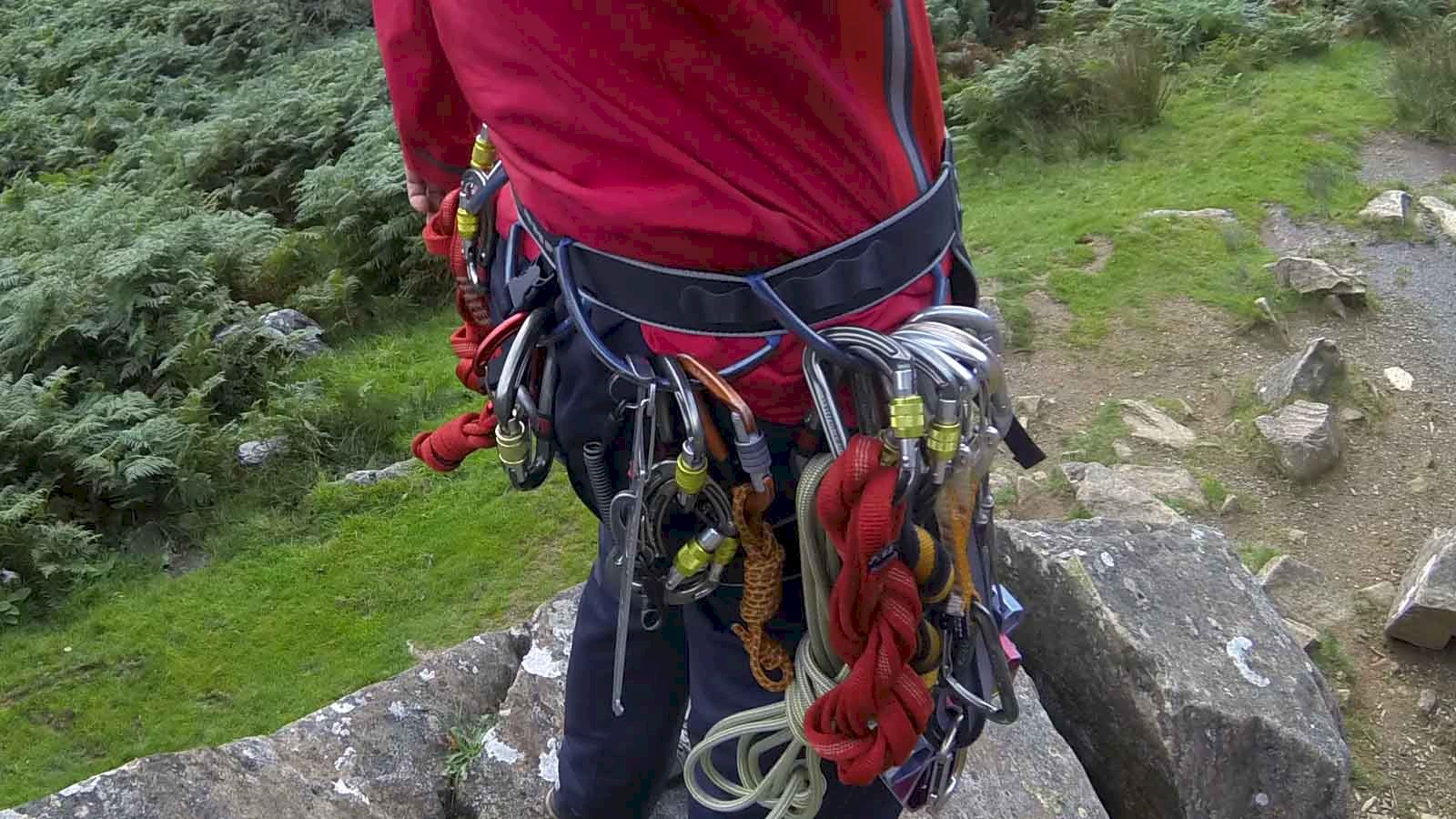
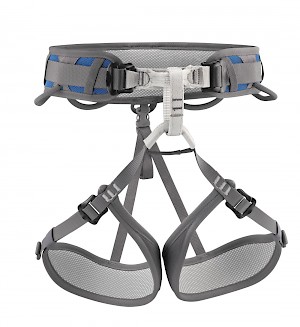
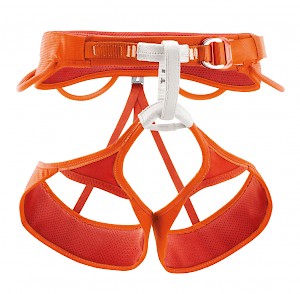
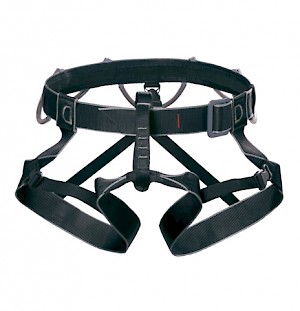
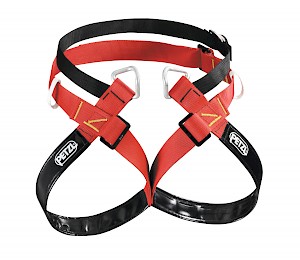
Leave a comment